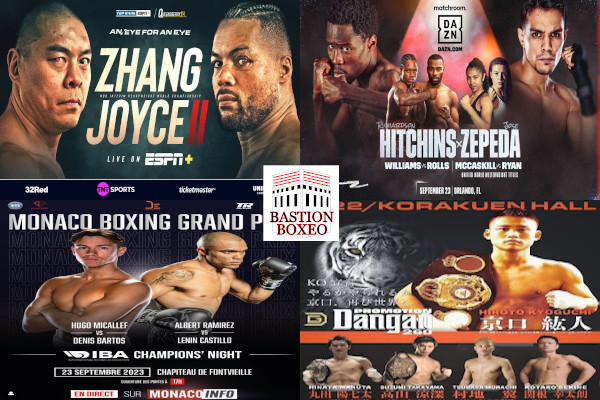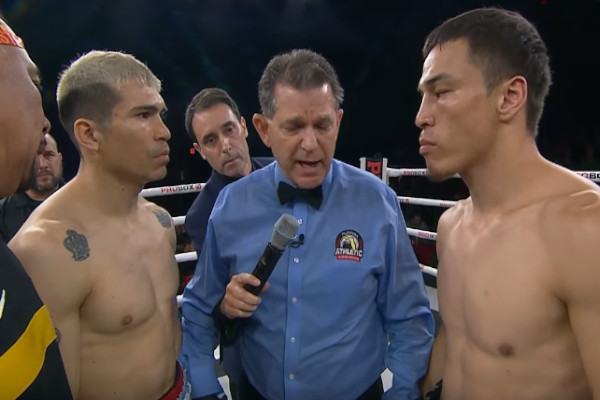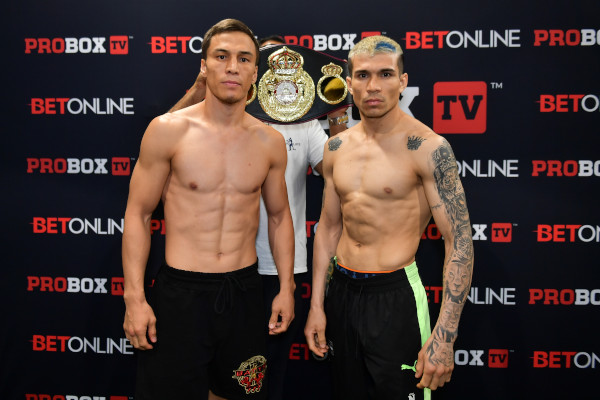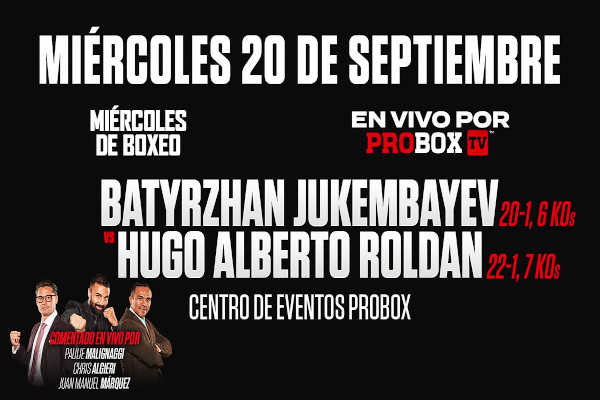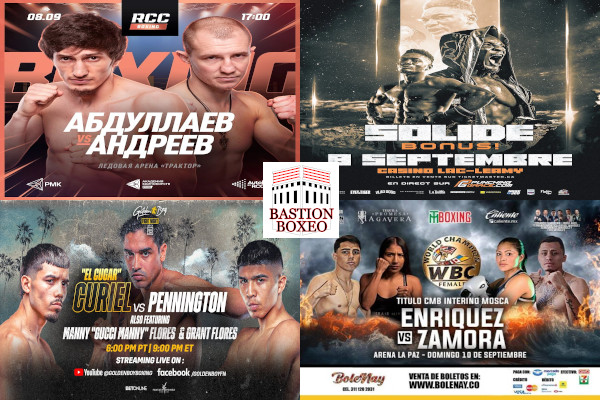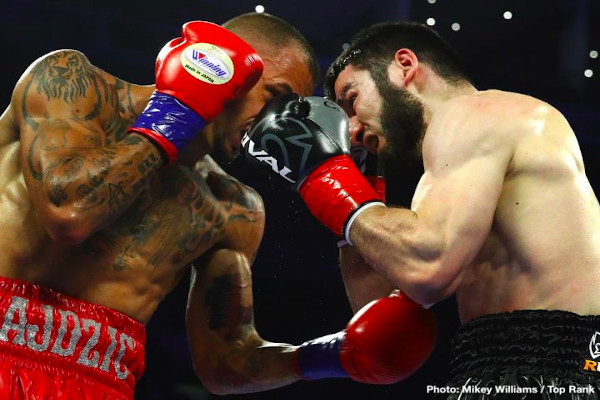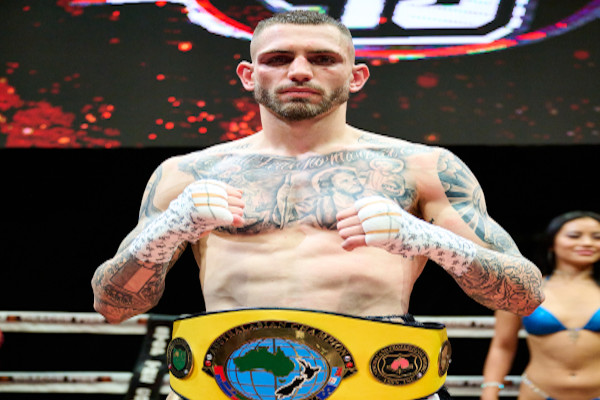Arsen Goulamirian logró cuestionable victoria por decisión con corruptas cartulinas en duro combate ante Egorov
Daniel Pi
@BastionBoxeo
La Palestre, Le Cannet, Francia. Campeonato mundial WBA del peso crucero. Tercera defensa del titular Goulamirian.
En 2021, unas horas antes de que tuviese que subirse al ring en Rusia para medirse al local Aleksei Egorov 11(7KO)-1, el franco-armenio Arsen “Feroz” Goulamirian 27(18KO)-0 dio de repente un positivo en COVID pese a haber dado negativo en todos los tests anteriores y haberse mantenido en un entorno aislado. Entonces, muchos sospecharon que el resultado de la prueba (que llevó a la cancelación del choque) había sido falseado de una u otra manera para evitar afrontar un combate difícil ante un duro rival y encima como visitante. De hecho, algunos sugirieron directamente que el equipo del francés quería evitar un robo en Rusia.
En 2022, la pugna Goulamirian-Egorov finalmente tuvo lugar en Francia, donde lejos de haber más justicia hubo una atroz cantidad de localismo, aunque en este caso a favor del campeón. Y es que, con unas cartulinas manifiestamente corruptas de doble 116-112 y de un 117-111, Goulamirian obtuvo una victoria en una muy exigente pugna en la que Egorov ofreció una buena actuación, que en territorio neutral perfectamente le habría valido el triunfo.
Dejando de lado el razonable sesgo de los espectadores, que celebraron de forma constante y ensordecedora incluso los golpes que sólo tocaban el aire, se debe subrayar que la retransmisión de Canal+ estuvo totalmente carente de imparcialidad. Además de los comentaristas que sólo veían el trabajo del francés, la cartulina extraoficial absurda y las repeticiones sesgadísimas, merecen especial atención las falseadas estadísticas mostradas por la cadena.
Como ejemplo se puede mencionar que en un undécimo asalto en el que hubo muchos clinches y un impreciso Goulamirian conectó entre 30 y 40 golpes a la cabeza de su rival, se mostró una imagen en la retransmisión que decía que el local había impactado casi 100 golpes contra la cabeza de Egorov…
Dicho esto, durante el primer tercio Egorov fue claramente superior, ya que ejecutó el plan de batalla perfecto. A diferencia de los anteriores rivales del campeón, el ruso, que tiene fuerza equiparable a la de su contrincante, evitó ceder terreno y desde el centro del ring se mostró activo de manos con certeros uno-dos, variados ganchos arriba y abajo, combinaciones hook-uppercut y directo-uppercut, etc. De hecho, en lugar de dejarse atropellar como otros, Egorov incluso obligó a retroceder al potente y agresivo Goulamirian, algo rarísimo en él.
Viendo que las cosas iban mal, desde el cuarto round Goulamirian empezó a intensificar sus acciones, pero estaba tácticamente incómodo, girando para encontrar huecos sin lograrlo y recibiendo golpes de poder tanto al ataque como a la contra. En los intercambios que se produjeron hubieron buenas manos de ambos y minutos contendidos y de alta exigencia física, pero la efectividad de Egorov no se desvaneció, aunque empezó a dar claras muestras de cansancio.
Es cierto que Egorov no se hizo ningún favor recurriendo insistentemente a clinches en la segunda mitad, a veces tras claros puños recibidos y a veces sin tener un gran motivo para ello, cosa que agravó la sensación de que estaba desfondado y de que los ataques de un Goulamirian ahora más insistente estaban siendo más eficaces de lo que a menudo lo eran. Pero incluso en sus peores rounds como el octavo y el décimo, en los que Egorov fue sacudido por duros puños, el visitante siguió replicando con destreza y no poca voluntad.
Además, tras su repunte de actividad ofensiva, Goulamirian terminó bastante cansado y en los últimos asaltos incluso fue él quien inició muchos de los clinches ante un Egorov que, con un segundo aire, pudo tener sus momentos en los minutos finales.
¿Cuál es la conclusión de este combate? Por un lado, que Goulamirian es fuerte pero tácticamente limitado, y que si sus oponentes no se repliegan amedrentados no es ni muchísimo menos tan eficaz como cuando se vuelca al ataque. Al contrario, un boxeador que tenga una fortaleza similar a la suya (algo que es difícil) y que esté dispuesto a dar guerra y a no dejarle avanzar, perfectamente puede derrotarlo. Por otro lado, también quedó de manifiesto que Egorov es un aspirante de élite del peso crucero y que tanto él como Goulamirian tienen las cualidades para ofrecer pugnas emocionantes.
Finalmente, también quedó claro que, por desgracia, en el boxeo siempre ha sido, es y será dificilísimo pelear como visitante, especialmente si quien se desplaza al territorio de su rival tiene en contra el contexto político, los intereses de la cumbre de la industria o ambas cosas…
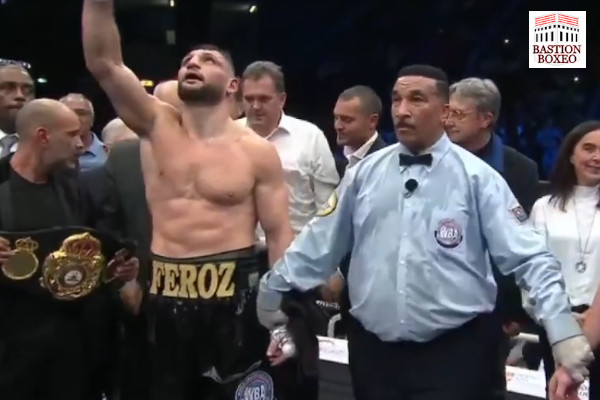
Arsen Goulamirian achieved questionable victory by decision with corrupt scorecards in a tough fight against Egorov
Daniel Pi
@BastionBoxing
La Palestre, Le Cannet, France. WBA world cruiserweight championship. Goulamirian’s third defense.
In 2021, a few hours before he had to step into the ring in Russia to face the local Aleksei Egorov 11(7KO)-1, the Franco-Armenian Arsen “Feroz” Goulamirian 27(18KO)-0 suddenly tested positive for COVID despite having tested negative in all his previous tests and having remained in an isolated environment. Then, many suspected that the result of the test (which led to the cancellation of the match) had been falsified in one way or another to avoid facing a difficult fight against a tough rival and on top of that as a visitor. In fact, some directly suggested that the Frenchman’s team wanted to prevent a robbery in Russia.
In 2022, the Goulamirian-Egorov fight finally took place in France, where far from more justice there was an atrocious amount of localism, albeit in this case in favor of the champion. With manifestly corrupt cards of double 116-112 and one 117-111, Goulamirian obtained a victory in a very demanding fight in which Egorov offered a good performance, which in neutral territory would have perfectly earned him the victory.
Leaving aside the reasonable bias of the crowd, who constantly and deafeningly celebrated even the blows that only hit the air, it must be stressed that the Canal+ broadcast was astonishingly partial. In addition to the fact that the commentators only saw the Frenchman’s work, to the absurd unofficial card and the extremely biased replays, the statistics shown by the network deserve special attention.
As an example, it can be mentioned that in an eleventh round in which there were many clinches and an imprecise Goulamirian landed between 30 and 40 blows to the head of his opponent, an image was shown that stated that the local had landed almost 100 blows against Egorov’s head…
That said, during the first third of the bout Egorov was clearly superior, as he executed the perfect battle plan. Unlike the previous opponents of the champion, the Russian, who has strength comparable to that of Goulamirian, avoided giving ground and from the center of the ring he was active with accurate one-twos, hooks up and down in varied combinations, hooks linked with uppercuts, straight shots followed by uppercuts, etc. In fact, instead of being overwhelmed like others, Egorov even pushed back the powerful and aggressive Goulamirian, which is extremely rare.
Seeing that things were going badly for his interests, from the fourth round Goulamirian began to intensify his actions, but he was tactically uncomfortable, moving to find breaches without success and receiving power shots both on attack and on the counter. In the exchanges that took place, both landed good hands and there were contested and physically demanding minutes, but Egorov’s effectiveness did not disappear, although he began to show clear signs of fatigue.
It is true that Egorov did himself no favors by insistently resorting to clinches in the second half of the fight, sometimes after clear punches received and sometimes without much reason for it, which made it seem as he was completely worn out and that the attacks from Goulamirian (now more insistent) were being more effective than they often were. But even in his worst rounds like the eighth and tenth, in which Egorov was rocked by hard punches, the visitor continued to answer with skill and a lot of will.
In addition, after his increased offensive activity, Goulamirian ended up quite tired and in the last rounds he started many of the clinches, while Egorov, assisted by a second wind, had his moments in the final minutes.
What showed us this fight? On the one hand, that Goulamirian is strong but tactically limited, and that, if his opponents don’t retreat intimidated, he isn’t nearly as effective as when he charges on the attack. On the contrary, a boxer with a strength similar to his (something that is not very common), and who is willing to fight hard and not let him advance, can perfectly defeat him. On the other hand, it also became clear that Egorov is an elite cruiserweight contender and that both boxers have the necessary qualities to deliver exciting fights.
Finally, it was also evident that, unfortunately, in boxing is and always will be very difficult to fight as a visitor, especially if whoever travels to the country of his opponent has against him the political context, the interests of the elite of the industry or both…

